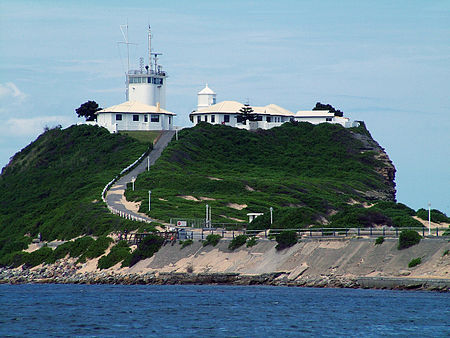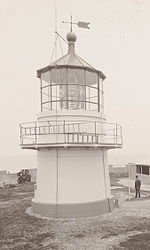Nobbys Head

Nobbys Head (Aboriginal and dual name: Whibayganba) is a headland located on the southern entrance to Newcastle Harbour, New South Wales, Australia. The headland is situated above the Hunter River and the Tasman Sea of the South Pacific Ocean. Originally called, Whibayganba by the Awabakal people, European colonists referred to it as Coal Island, and then later Nobbys Island. The Island was connected to the mainland at first by the Macquarie Pier, completed in 1846, 38 years after commencement. The pier was eventually replaced by a breakwater. Sand accumulated along the breakwall to make Nobby's beach, and the sand and plants makes the isthmus appear natural. The rock consisting of Nobbys Tuff of the original island has significant tunnelling, which was completed during the 1850s using convict labour, with the aim of destroying the island.Nobbys Head Lighthouse is located on the headland. The lighthouse is the third lighthouse built in New South Wales after the Macquarie Lighthouse in 1818 and the Hornby Lighthouse which was also built in 1858. The lighthouse is included in Newcastle's coat of arms.
Excerpt from the Wikipedia article Nobbys Head (License: CC BY-SA 3.0, Authors, Images).Nobbys Head
Macquarie Pier, Newcastle-Maitland Newcastle
Geographical coordinates (GPS) Address Nearby Places Show on map
Geographical coordinates (GPS)
| Latitude | Longitude |
|---|---|
| N -32.923333333333 ° | E 151.80111111111 ° |
Address
Nobbys Lighthouse
Macquarie Pier
2300 Newcastle-Maitland, Newcastle
New South Wales, Australia
Open on Google Maps








